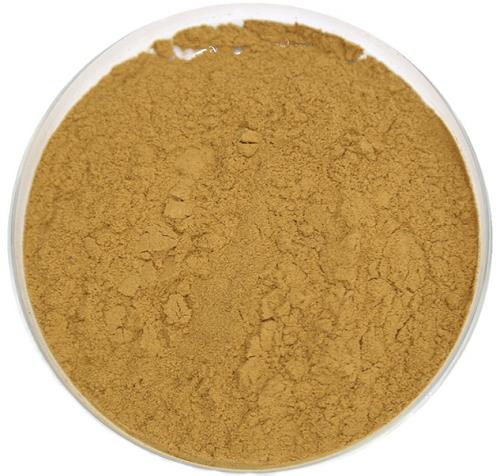Stigmasterol: Therapeutic Mechanisms and Triple-Negative Breast Cancer Inhibition
Nov 13,2025
Stigmasterol is a natural phytochemical phytosterol, widely found in plant sources like soybean oil. It belongs to the family of sterols, similar to cholesterol, but with unique properties that positively affect lipid metabolism, cardiovascular health, and certain cancer treatments. Stigmasterol exhibits anti-inflammatory, antioxidant, and cholesterol-lowering effects. It also plays a role in reducing the risk of cardiovascular disease and cancer. Stigmasterol influences cellular processes such as apoptosis, cell proliferation, and oxidative stress. Its molecular structure, which includes double bonds and a unique side chain, is key to its effectiveness in reducing cholesterol absorption and managing lipid metabolism. Research suggests it may have the potential to treat cancers, including ovarian and breast cancers, by influencing cell growth and death.

Research Progress on the Therapeutic Mechanisms of Stigmasterol for Multiple Diseases
The search for natural compounds with unique physiological activities and pharmacological significance remains a pivotal focal point amidst the ongoing exploration in the fields of life sciences and medicine. Stigmasterol is a naturally occurring steroid within the plant kingdom that transcends the boundaries of plant chemistry and is a hot research spot in the pharmaceutical field. It has a distinct chemical architecture, characterized by the presence of multiple unsaturated double bonds and specific functional moieties, which confers it a wide array of biological activities. Since its discovery as a cholesterol-lowering agent and the recognition of its growing potential in treating various maladies, its research value has become increasingly obvious. In-depth scrutiny of stigmasterol has significant theoretical and practical implications within the medical domain. Hence, in this review, we comprehensively summarized the biological activities, mechanisms of action, and applications of stigmasterol in the pharmaceutical industry. The aim was to provide a reference to further explore and develop this compound, thereby propelling the advancement of medical research and contributing to the improvement of human health.[1]
The incidence of metabolic diseases such as diabetes, NAFLD, and obesity has rapidly increased owing to the changes in lifestyle and the accelerating aging process and has become a major public health issue. Stigmasterol has gradually shown considerable therapeutic potential in this field. When insulin resistance occurs, the insulin receptor substrate (IRS) proteins may undergo abnormal phosphorylation, which in turn impairs the effective activation of the downstream phosphoinositide 3-kinase (PI3K)-protein kinase B (Akt) signaling pathway. Consequently, the translocation of GLUT4 to the cell membrane is affected, leading to a reduction in the cell’s uptake and utilization of glucose. Inflammatory responses and immune regulation play crucial roles in the complex physiological systems of the human body. An imbalance in these two processes leads to various diseases, posing a serious threat to health. Recently, studies have revealed that stigmasterol exhibits substantial anti-inflammatory and immune regulatory effects and has potential for the prevention and treatment of various inflammation-related diseases. Reportedly, stigmasterol plays a positive role in the treatment of arthritis. Inflammatory cytokines such as TNF-α, IL-6, and IL-1β are highly expressed during the pathogenesis of arthritis.
Stigmasterol Attenuates Triple-negative Breast Cancer Stem Cell Properties
Breast cancer is one of the most common malignant tumors and is the leading cause of cancer-related deaths among women worldwide. The occurrence and development of breast cancer are usually caused by abnormal alterations in the pathway of cell proliferation regulating, differentiation, and apoptosis. Plant sterols have various pharmacological activities, such as antidiabetic, anti-inflammatory, and anticancer. In addition, previous reports indicated that phytosterol-rich foods help to decrease the risk of developing cancer by 20% . Stigmasterol ((C29H48O), SS) is a common phytosterol rich in various vegetables. In recent years, SS has attracted attention due to its low cytotoxicity and anti-cancer properties. For example, Stigmasterol could inhibit Akt/mTOR pathway and simultaneously protect autophagy and induce apoptosis in gastric cancer cells.[2]
In this research, we discovered that the JAK3 pathway was involved in BCSC activity inhibition triggered by Stigmasterol, which was proved by the downregulation of JAK3 and p-JAK3. Furthermore, overexpression of the JAK3 signaling pathway could directly influence activation, and knockdown of JAK3 expression suppressed BCSC activity. In our study, JAK3 overexpression attenuated the inhibitory effect of SS on BCSC activity and stemness. These results indicated that Stigmasterol inhibits BCSC activity and stemness by suppressing the JAK3 expression. However, further mechanisms need to be detected in future studies. This study demonstrated that Stigmasterol could inhibit BCSC activity and stemness, and JAK3 promotes the activity and stemness of BCSCs both in the intro and vivo. Furthermore, our study showed that SS inhibits BCSC activity and stemness by suppressing the JAK3 expression (see graphical abstract). It would enrich our fundamental understanding of the antitumor properties of Stigmasterol, otherwise providing evidence that stigmasterol may become a potential anticancer drug treatment for breast cancer in the future.
References
[1]Li J, Zheng X, Qi J. Research Progress on the Therapeutic Mechanisms of Stigmasterol for Multiple Diseases. Molecules. 2025 Apr 23;30(9):1874. doi: 10.3390/molecules30091874. PMID: 40363681; PMCID: PMC12073555.
[2]Zhou R, Zhang Y, Xu L, Sun Y. Stigmasterol Attenuates Triple-negative Breast Cancer Stem Cell Properties by Inhibiting JAK3. J Cancer. 2025 Feb 3;16(5):1618-1630. doi: 10.7150/jca.94822. PMID: 39991585; PMCID: PMC11843247.
- Related articles
- Related Qustion
2-Allylphenol inhibits Botrytis cinerea growth, and it reduces IL-1β/TNF-α to exert anti-inflammatory and antinociceptive activities.....
Nov 13,2025Chemical Materials5-Amino-o-cresol (hair dye coupling agent) has minimal sensitization, forms N-acetylated metabolites, and shows mild toxicity with urine excretion.....
Nov 13,2025Chemical MaterialsStigmasterol
83-48-7You may like
- Medical uses and Toxicology of Vonoprazan
Nov 13, 2025
- Synthesis and Bioactivity of Sesamol
Nov 12, 2025
- Environmental Pollution and Degradation of Metribuzin
Nov 7, 2025
- Stigmasterol
-

- $222.00 / 250G
- 2025-11-13
- CAS:83-48-7
- Min. Order: 1G
- Purity: 96.12%
- Supply Ability: 100kg/month
- Stigmasterol
-

- $0.00 / 1kg
- 2025-11-13
- CAS:83-48-7
- Min. Order: 1kg
- Purity: ≥95% HPLC
- Supply Ability: 1000kg
- Stigmasterol
-

- $0.00 / 1removed
- 2025-11-10
- CAS:83-48-7
- Min. Order:
- Purity: 99.67%
- Supply Ability: 10g






